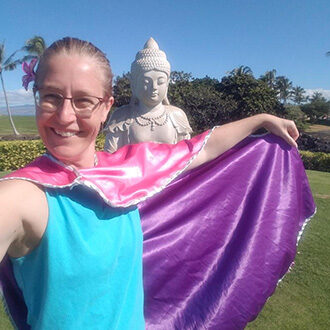The lymphatic drainage massage is a massage procedure designed to help your body’s lymphatic system flush out toxins and other accumulated wastes. First developed in the 1930s by Danish couple Emil and Estric Vodder, the technique spread like wildfire in France and was used to treat lymphedema—the swelling of extremities due to chemotherapy and radiation therapy for cancer.
To understand how lymphatic drainage massage works, we need to have a quick overview of the lymphatic system.
The Lymphatic System—Why It’s Important
The lymphatic system is one of your body’s ways to flush out toxins and fight infection. It is a network of tissues and organs that exist to transport the lymph, a fluid whose job is to collect waste products, bacteria, and damaged cells from your body’s various other organs.
The lymph gets filtered by lymph nodes along the way before the remaining fluid is returned to the blood circulation. Most of the fighting occurs in lymph nodes, where Lymphocytes—a kind of white blood cell—detect and neutralize foreign bacteria and other disease-causing pathogens.
Occasionally, these lymph nodes become overwhelmed and trigger an inflammation response. It is for that reason that doctors feel around parts of your neck and under the armpits to check for lymph node inflammation during checkups.
Lymphatic drainage massage targets these nodes and other lymphatic organs to encourage lymph movement through the tissues and the other lymph nodes.
What happens during a lymphatic drainage massage?
The procedure involves a series of gentle, rhythmic movements—such as light dragging, light compression, stretching, and cupping motions—to stimulate the lymphatic system’s biological activities. The lymphatic system can be worked at many different layers and depths. Lymph can be found at all different levels – skin, muscle, organ, nerve, and bone. Because your lymph nodes are near the skin, there is no need for the deep compression used in other massages.
The massage starts with your central part of your body and continues on towards the extremities to ensure that the lymph is not trapped anywhere. We work with the lymphatic pathways of the body.
What are the benefits of getting a lymphatic drainage massage?
Lymphatic drainage massages bring relief for general pain, digestive problems, inflammation issues, injuries or recovery from surgeries, headaches, cellulite, and even skin issues, such as acne or rosacea. This is a direct result of flushing out toxins that may be stuck in your lymphatic system.
After a massage session targeted towards lymph drainage, many clients report feeling rejuvenated and lighter. It’s also common to see a more contoured abdomen after the session due to losing water retention and bloat. While the effect is temporary, it helps to understand that your stomach’s appearance isn’t always fat: sometimes, it’s just water staying around before being absorbed by your body. For longer lasting manual lymphatic drainage, kinesio taping is applied to continue the process for days afterwards.
Conclusion
Lymphatic drainage massage’s primary purpose is to assist your body’s lymphatic system, accelerating your body’s healing process, particularly following an illness or injury. In fact, some studies show how breast cancer patients benefit from lymphatic drainage massage, helping reduce swelling by as much as 7% if used with intensive compression bandaging.
This type of massage can also help revitalize you after a particularly stressful time in your life, as it helps your body regulate its fluids and regenerate your cells quickly. The procedure is thus very organic and promotes natural body healing!
Meg Parker is an intentional health coach with years of experience working with an extensive range of clients, including World Cup athletes and general citizens. Besides lymphatic drainage massage, she also offers services in reflexology, Swedish massages, sports yoga, and more. Contact us today to book an appointment!









